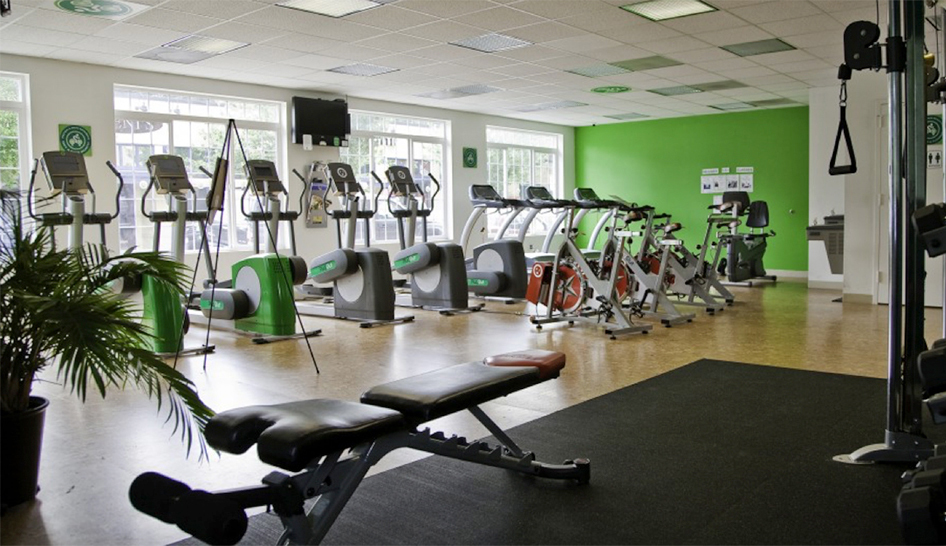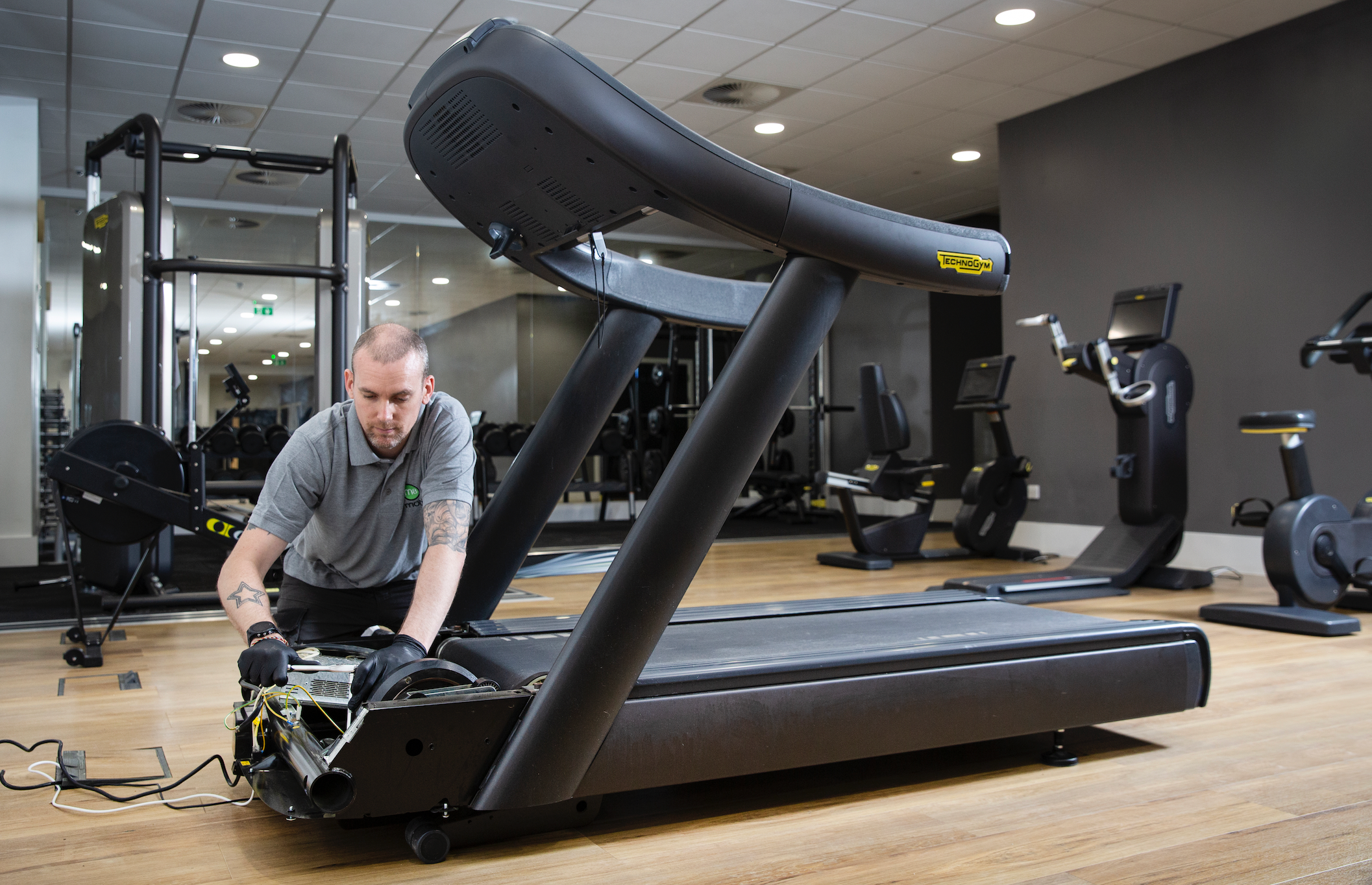If you’re looking to combine your love for fitness with your passion for the environment, building an eco-friendly home gym is a great way to make a positive impact. Not only will you be reducing your carbon footprint, but you’ll also be creating a healthy and sustainable space to pursue your fitness goals.
In this article, we will explore the importance of an eco-friendly gym, provide practical tipson planning and choosing sustainable materials, discuss green equipment choices, and offer guidance on eco-friendly gym maintenance and workout routines. So let’s dive in and discover how you can build your very own green gym sanctuary.
Understanding the Importance of an Eco-Friendly Gym

Traditional gyms are known for their high energy consumption and environmental impact. According to the U.S. Environmental Protection Agency, commercial gyms can be extremely energy-intensive, using an average of 40,000 British thermal units (BTUs) per square foot annually. This excessive energy usage contributes to greenhouse gas emissions and further strains our already taxed energy resources.
On the other hand, eco-friendly gyms often prioritize sustainability, energy efficiency, sustainable materials, and green practices. By embracing eco-friendly principles, you can significantly reduce your carbon footprint and create a space that aligns with your values.
When it comes to energy consumption, traditional gyms consume huge amounts of electricity to power their lighting, heating, ventilation, and air conditioning (HVAC) systems. Additionally, running multiple treadmills, ellipticals, and weightlifting machines on a constant basis further adds to their energy consumption.
Moreover, the fitness industry is notorious for its excessive use of single-use plastics. From plastic water bottles to disposable towels, traditional gyms generate a staggering amount of waste that often ends up in landfills, contributing to pollution and harming our planet.
The Environmental Impact of Traditional Gyms
Traditional gyms not only consume significant amounts of energy but also contribute to the depletion of natural resources. The production and transportation of gym equipment, such as weight machines and exercise bikes, require the extraction of raw materials and the burning of fossil fuels. This process releases harmful carbon emissions into the atmosphere and contributes to climate change.
In addition to the environmental impact, traditional gyms also have a negative effect on indoor air quality. The constant use of synthetic materials, such as foam padding and synthetic fibers, can release volatile organic compounds (VOCs) into the air. These VOCs can cause respiratory problems, allergies, and other health issues for gym-goers.
Physical and Mental Health Benefits of Going Green Exercise
Aside from its positive impact on the environment, an eco-friendly home gym can also provide numerous health and wellness benefits. By choosing sustainable materials and low-VOC (volatile organic compound) finishes for your gym space, you can improve indoor air quality and reduce the risk of respiratory problems and allergies.
Research has shown that spending time in nature and green, outdoor spaces can have a positive impact on mental health and well-being. By incorporating natural elements into your gym design, such as large windows, plants, and natural materials, you can create a serene and calming atmosphere that enhances your workout experience.
Furthermore, eco-friendly gyms often prioritize natural lighting and ventilation, which can improve mood, increase productivity, and boost energy levels. Exercising in a well-lit and well-ventilated space can enhance your overall workout performance and make your gym sessions more enjoyable.
Additionally, eco-friendly gyms often promote sustainable practices such as recycling, composting, and using energy-efficient equipment. These practices can create a sense of community and encourage gym-goers to adopt more sustainable habits in their daily lives.
Transitioning to an eco-friendly gym not only benefits the environment but also enhances your health and well-being. By reducing energy consumption, minimizing waste, and incorporating natural elements, you can create a gym space friendly fitness, that aligns with your values and promotes a healthier lifestyle.
Planning Your Eco-Friendly Home Gym

Before diving into the details of materials and equipment choices, careful planning is essential for creating an eco-friendly home gym.
Creating a sustainable and environmentally friendly home gym not only benefits the planet but also promotes a healthier lifestyle for you and your family. By incorporating eco-friendly practices into your gym design, you can reduce your carbon footprint and create a space that aligns with your values.
Space Considerations and Layout
First, assess the available space in your home and determine how much room you can allocate to your gym. Consider factors such as ceiling height, ventilation, and natural light sources. Optimize the layout to maximize space efficiency and ensure that there is enough room for your desired equipment.
When planning the layout, think about the flow of the space and how it can enhance your workout experience. Consider incorporating designated areas for stretching, yoga, or meditation to create a well-rounded fitness environment.
Additionally, consider the location of your gym within your house. Choosing a room with easy access to natural light and views of the outdoors can provide a more inspiring and uplifting workout environment. Natural light not only reduces the need for artificial lighting but also has a positive impact on mood and energy levels.
Choosing Sustainable Materials
When it comes to building an eco-friendly gym, choosing sustainable materials is crucial. Look for products that are made from recycled or responsibly sourced materials. By using eco friendly materials and opting for materials that have a lower environmental impact, you can contribute to the preservation of natural resources.
For flooring, opt for options like natural rubber, cork, or bamboo, as they are durable, renewable, and non-toxic. These materials not only provide a comfortable and safe surface for your workouts but also have a minimal impact on human health and the environment.
When selecting paint, adhesives, and sealants, choose low-VOC or zero-VOC options to minimize the release of harmful chemicals into the air. Volatile Organic Compounds (VOCs) are chemicals commonly found in many household products that can contribute to indoor air pollution and have adverse health effects. By choosing low-VOC or zero-VOC options, you’ll create a healthier indoor environment for yourself and your family.
Consider incorporating sustainable and recycled materials into other aspects of your gym as well. From equipment made from recycled metals to energy-efficient lighting fixtures, there are numerous options available to help you create an eco-friendly space.
By carefully considering the materials used in your home gym, you can ensure that your fitness routine aligns with your commitment to sustainability.
Green Equipment Choices for Your Home Gym

Equipping your home gym with energy-efficient and sustainable exercise equipment is an integral part of building an eco-friendly workout space. By making conscious choices, you can reduce your carbon footprint and contribute to a healthier planet.
Energy-Efficient Cardio Machines
Cardio machines, such as treadmills, stationary bikes, and ellipticals, are typically the biggest energy consumers in a gym. However, there are several ways you can make these machines more energy-efficient.
One option is to look for machines that are ENERGY STAR certified. These machines meet strict energy efficiency standards and often have features like power-saving modes and automatic shut-off timers to minimize energy wastage. By choosing an ENERGY STAR certified machine, you can significantly reduce your energy consumption without compromising on the quality of your workout.
Another innovative option is to invest in self-powered or kinetic machines. These machines harness your physical effort and convert it into usable energy. As you work out, the machine generates electricity, reducing your dependence on the power grid. This not only saves energy but also allows you to contribute to the production of clean, renewable energy.
Sustainable Strength Training Equipment
Strength training is an essential part of any fitness routine, and choosing sustainable equipment can make a significant difference.
When it comes to strength training equipment, opt for items made from recycled or sustainable materials. For example, look for dumbbells and weight plates made from recycled steel or responsibly sourced wood. These materials not only reduce the demand for virgin resources but also minimize the environmental impact of the manufacturing process.
In addition to the materials used, consider the finishes on the equipment. Choose dumbbells and weight plates with non-toxic finishes to ensure that you are not exposed to harmful chemicals during your workout.
Another sustainable option is to have minimal equipment and switch to resistance bands or adjustable weight systems. These versatile alternatives eliminate the need for multiple equipment sets, reducing both the space required in your home gym and the resources consumed in their production.
If you’re looking to save money and reduce waste, consider investing in second-hand equipment. Many fitness equipment resellers offer high-quality used gym equipment in good condition. By purchasing second-hand, you extend the lifespan of these items and prevent them from ending up in landfills.
Building a green home gym is not only environmentally friendly but also an opportunity to make a positive impact on your health and well-being. By choosing energy-efficient and sustainable equipment, you can create a workout space that aligns with your values and supports a sustainable future.
Eco-Friendly Gym Maintenance

Maintaining your eco-friendly home gym involves adopting green cleaning practices and implementing energy-saving measures. By taking these steps, you can create a sustainable workout space that not only benefits your health but also the environment.
When it comes to cleaning your gym, it’s essential to avoid using conventional cleaning products that contain harsh chemicals and toxic ingredients. These chemicals can not only be harmful to your health but also have a negative impact on the environment. Instead, opt for natural alternatives such as vinegar, baking soda, and citrus-based cleaners. These substances are effective, eco-friendly, and safe to use around your workout equipment.
In addition to using natural cleaning solutions, it’s crucial to regularly clean your gym equipment and surfaces to maintain hygiene and prevent the buildup of bacteria. Wipe down equipment after each use and establish a cleaning routine to keep your gym space fresh and inviting. By doing so, you not only create a clean and healthy environment for your workouts but also extend the lifespan of your equipment.
Natural Cleaning Solutions for Your Gym
When it comes to natural cleaning solutions, vinegar is a versatile and effective option. It can be used to clean various surfaces, including countertops, yoga mats, and even gym equipment. Mix equal parts of vinegar and water in a spray bottle and use it to wipe down surfaces. Vinegar has antimicrobial properties, making it an excellent choice for disinfecting your gym.
Baking soda is another natural cleaning agent that can be used in your gym. It is particularly useful for removing odors from gym equipment and workout clothes. Sprinkle some baking soda on your equipment or add it to your laundry detergent to eliminate unpleasant smells. Additionally, baking soda can be used as a gentle abrasive to clean stubborn stains on surfaces.
Citrus-based cleaners are not only effective in cleaning but also leave a refreshing scent in your gym. These cleaners are made from natural citrus extracts and are free from harsh chemicals. They can be used to clean various surfaces, including mirrors, windows, and gym equipment. The natural oils in citrus fruits also have antibacterial properties, making them a great choice for maintaining hygiene in your gym.
Energy-Saving Tips for Gym Upkeep
In addition to green cleaning practices, reducing your gym’s energy consumption is another crucial aspect of maintaining an eco-friendly workout space. By implementing simple energy-saving measures, you can minimize your environmental impact and save on energy costs.
One effective way to reduce energy usage in your gym is by installing energy-efficient LED lighting fixtures. LED lights use significantly less energy than traditional incandescent bulbs and have a longer lifespan. By replacing your gym’s lighting with LED fixtures, you can enjoy bright and efficient lighting while reducing your energy consumption.
Another energy-saving tip is to make use of natural light during the day. Open curtains and blinds to allow sunlight to illuminate your gym space. Not only does natural light create a pleasant and inviting atmosphere, but it also reduces the need for artificial lighting, further decreasing your energy usage.
If your gym allows for it, take advantage of natural ventilation. Opening windows or using fans can help circulate fresh air and reduce the need for air conditioning. This not only saves energy but also improves air quality in your gym.
Consider investing in a smart thermostat to regulate the temperature efficiently. A smart thermostat can learn your gym usage patterns and adjust the temperature accordingly, avoiding unnecessary energy usage. By optimizing your gym’s temperature, you can create a comfortable workout environment while minimizing energy waste.
Maintaining an eco-friendly gym involves adopting green cleaning practices and implementing energy-saving measures. By using natural cleaning solutions and reducing energy consumption, you can create a sustainable workout space that benefits both your health and the environment.
So, start implementing these eco-friendly practices in your gym today and make a positive impact on the planet!
Incorporating Green Practices into Your Workout Routine

An eco-friendly gym experience goes beyond the physical space and equipment. You can further reduce symptoms enhance your environmental impact by adopting green practices into your workout routine.
When it comes to incorporating green practices into your workout routine, there are numerous options to explore. One eco-conscious exercise habit to consider is incorporating outdoor activities into your fitness routine whenever possible. Instead of confining yourself to indoor workouts within the four walls of a gym, why not venture out into nature?
Explore local parks and hiking trails, take up cycling, or participate in outdoor group exercise classes. Not only will you enjoy the benefits of fresh air and sunlight, but you will also reduce the energy consumption associated with indoor gym workouts.
In addition to embracing more outdoor exercise activities, practicing energy-efficient exercise techniques can also make a difference. By focusing on proper form and breathing, you can maximize the effectiveness of each movement. This way, you’ll optimize your workouts, minimize wasted energy, and reduce the risk of injury.
So, next time you hit the gym or engage in any physical activity, pay attention to your body’s alignment and breathing patterns. Not only will this benefit your overall fitness, but it will also contribute to a greener workout routine.
Sustainable Fitness Apparel and Accessories
Another aspect of incorporating green practices into your workout routine is choosing sustainable fitness apparel and accessories. When it comes to workout gear, opt for sustainable options made from eco-friendly fabrics like organic cotton, bamboo, or recycled polyester.
These materials have a smaller environmental footprint compared to conventional synthetic fabrics. By investing in sustainable workout apparel, you are not only prioritizing your sustainable fitness routine but also supporting environmentally conscious brands.
Furthermore, it’s essential to consider the accessories you use during your workouts. Instead of relying on single-use plastic water bottles, invest in reusable ones. Not only will this reduce plastic waste, but it will also save you money in the long run.
Additionally, consider using sweat-wicking towels made from sustainable materials. These towels not only help you stay dry during intense workouts but also contribute to reducing waste.
Completing your eco-friendly workout ensemble, consider using a gym bag made from recycled or upcycled materials. This way, you can carry your workout essentials while minimizing your environmental impact and packaging waste too. By making conscious choices when it comes to fitness apparel and accessories, you can align your workout routine with your sustainability goals.
By following these guidelines and putting them into action, you can create an eco-friendly home gym that promotes both your fitness and environmental goals. Enjoy your green gains and remember that every small step towards sustainability counts.

